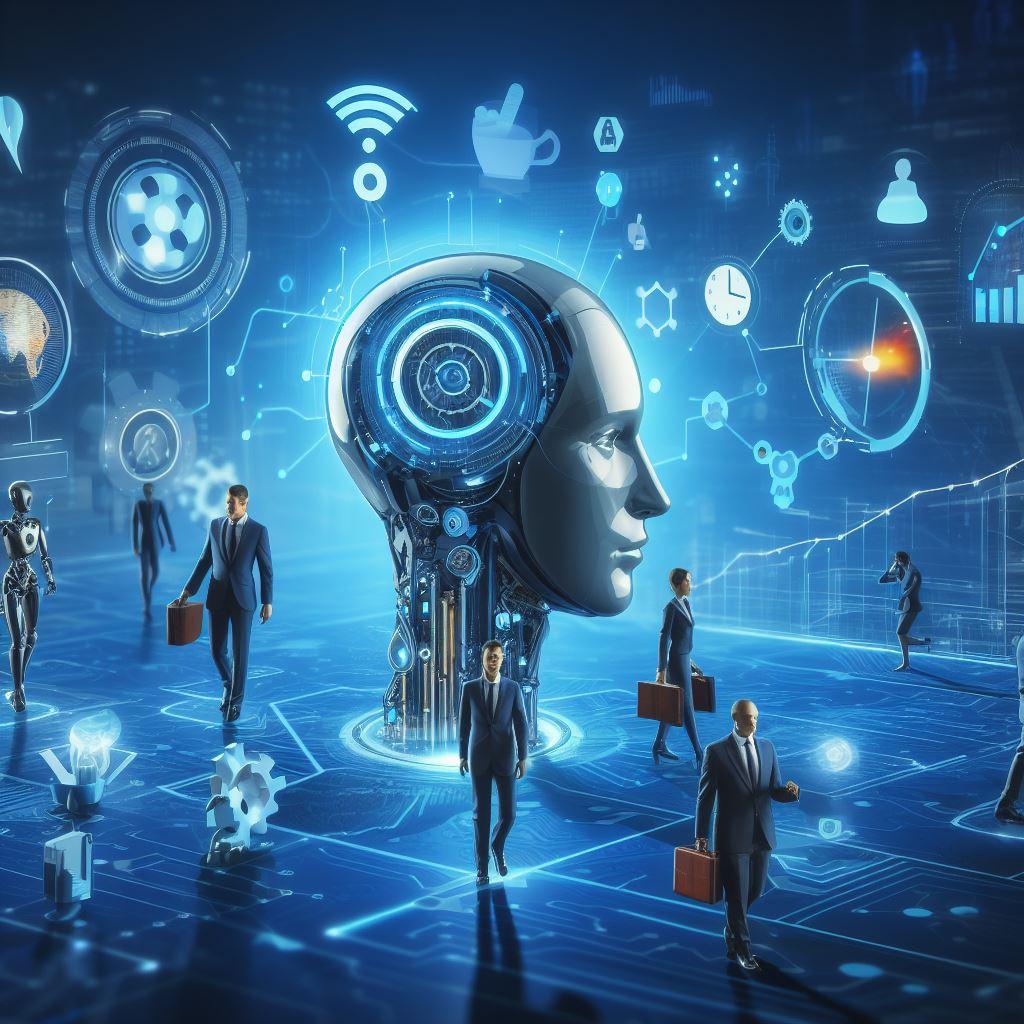The world of work is undergoing a seismic shift, driven by the rapid advancement of artificial intelligence (AI). As AI technologies continue to mature, they are reshaping industries, job roles, and the very nature of work itself. In this blog post, we will delve into how AI is redefining the future of work and the critical role that change management plays in guiding organizations through this transformative journey.
The AI Revolution in the Workplace
AI is no longer a futuristic concept but a present reality. From chatbots and virtual assistants to predictive analytics and automation, AI is infiltrating various aspects of work. This transformation is fundamentally altering the way we work and how organizations operate.
One of the primary ways AI is impacting the workplace is through the automation of routine tasks. Mundane, repetitive tasks that once consumed a significant portion of employees’ time can now be efficiently handled by AI-driven systems. This liberation from routine allows employees to focus on more creative, strategic, and value-added tasks.
Additionally, AI is driving data-driven decision-making. Organizations are leveraging AI-powered analytics to gain deeper insights from their data. This data-driven approach enables better decision-making, enhanced efficiency, and a more competitive edge. Whether it’s optimizing supply chains, predicting customer preferences, or identifying trends, AI is a game-changer.
Moreover, AI is enhancing customer experiences. AI-driven chatbots and virtual agents are becoming ubiquitous in customer service, providing round-the-clock support and improving user experiences. These AI-powered solutions can swiftly and accurately respond to customer inquiries, resolve issues, and even personalize interactions based on historical data.
The Crucial Role of Change Management
Change management is the linchpin in the AI-driven transformation of the workplace. While AI promises numerous benefits, its integration can be disruptive. Employees may resist AI adoption due to fear of job displacement or unfamiliarity with new technologies. This is where change management strategies come into play.
Effective change management strategies are designed to address these concerns and help employees embrace change. They provide a structured approach to guide organizations through the process of introducing AI while minimizing resistance and disruptions.
Another critical aspect of change management in the context of AI is skill development. As AI becomes integral to work processes, employees need to acquire new skills. Change management facilitates training and upskilling initiatives, ensuring that the workforce is equipped to operate effectively in the AI-driven environment. This not only benefits individual employees but also strengthens the organization’s overall capabilities.
Furthermore, AI can impact workplace culture. The introduction of AI technologies can lead to shifts in the way work is organized and performed. Change management ensures that the organizational culture aligns with AI adoption goals and values. It helps in creating a culture of adaptability, innovation, and continuous learning, which are essential in the AI-powered workplace.

Practical Tips for Effective AI Integration
In this pivotal chapter, we delve into the nuts and bolts of integrating AI effectively within an organization while maintaining employee morale and ensuring organizational cohesion. The successful incorporation of AI hinges on several key principles and practices, which we will outline below:
1. Develop a Comprehensive AI Strategy
Before diving into AI integration, it’s crucial to develop a well-defined strategy that aligns AI initiatives with the organization’s overall goals. Understand what specific problems AI will solve and how it will create value. A clear strategy provides a roadmap for implementation and ensures that AI efforts remain purpose-driven.
2. Foster a Culture of Learning
Encourage a culture of continuous learning within the organization. AI adoption often requires employees to acquire new skills and adapt to change. Provide access to training programs, workshops, and resources to facilitate skill development. This not only empowers employees but also strengthens the organization’s capacity to leverage AI effectively.
3. Communicate Transparently
Transparent communication is essential throughout the AI integration process. Keep employees informed about the reasons behind AI adoption, its expected impact, and how their roles may evolve. Address concerns and questions openly, instilling a sense of trust and collaboration.
4. Involve Employees in Decision-Making
Engage employees in decision-making related to AI implementation. Encourage their input and feedback on how AI can best support their work. This participatory approach not only generates valuable insights but also fosters a sense of ownership and buy-in.
5. Start with Small-Scale Pilots
Implementing AI on a small scale through pilot projects allows organizations to test the waters before committing fully. Pilot projects offer valuable insights, identify potential challenges, and provide opportunities for fine-tuning AI solutions.
6. Monitor and Measure Progress
Establish key performance indicators (KPIs) to monitor the impact of AI adoption. Regularly assess progress against these KPIs and be willing to adjust the strategy as needed. Data-driven insights are invaluable in refining AI integration efforts.
7. Prioritize Data Privacy and Security
AI relies heavily on data, making data privacy and security paramount. Implement robust data governance practices to ensure data quality, security, and compliance with regulations. Demonstrating a commitment to data ethics enhances trust among employees and stakeholders.
8. Provide Support Resources
Recognize that employees may encounter challenges during the transition to AI-powered workflows. Offer support resources, such as dedicated help desks, to assist employees with AI-related issues promptly. Ensure that they feel valued and supported throughout the process.
9. Celebrate Achievements
Acknowledge and celebrate milestones and successes in AI integration. Recognize the efforts of both individuals and teams who contribute to the successful implementation of AI solutions. Celebrations can boost morale and motivation.
10. Continuously Iterate
AI and technology, in general, are constantly evolving. Therefore, it’s essential to maintain a dynamic approach to AI integration. Continuously iterate on AI strategies, adapt to emerging technologies, and remain flexible in responding to changing organizational needs.
By following these practical tips, change managers and organizational leaders can navigate the AI-driven transformation smoothly, promoting a harmonious blend of technology and human talent that leads to enhanced productivity, innovation, and ultimately, organizational success.
Conclusion
The future of work is undeniably intertwined with artificial intelligence. AI is not here to replace humans but to augment their capabilities and drive progress. However, this transformation must be carefully managed to ensure that it benefits both organizations and their employees. Change management plays a pivotal role in guiding this AI-driven evolution, making it a critical discipline for organizations looking to thrive in the workplace of tomorrow.


